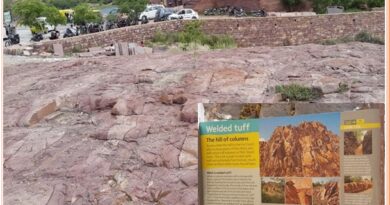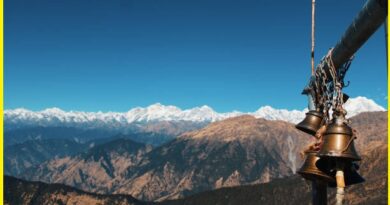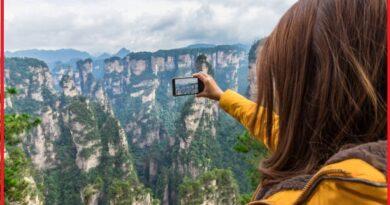Makgadikgadi Salt Pans Botswana-Best Camping and Safari Tours Destination
Makgadikgadi Pans Botswana
Makgadikgadi Pans is a large salt pan in northeastern Botswana, covering an area of over 12,000 square kilometers. It is one of the largest salt flats in the world and is a remnant of a massive lake that once covered much of central Botswana. The Makgadikgadi Pans are a unique natural wonder, with an otherworldly appearance of vast, flat expanses of salt, interspersed with grassy islands and scattered baobab trees. During the rainy season, the pans fill with water, attracting large flocks of flamingos and other water birds. When the water dries up during the dry season, the pans become a vast, shimmering desert landscape.
The Makgadikgadi Pans are also home to a variety of wildlife, including meerkats, brown hyenas, bat-eared foxes, and a variety of antelopes such as springbok, oryx, and hartebeest. The pans are also an important migration route for wildebeest and zebras.
The Makgadikgadi Pans are also rich in cultural history, with evidence of human habitation dating back thousands of years. Visitors can explore ancient rock art sites and learn about the traditional cultures of the San people, who have lived in the area for thousands of years. The Makgadikgadi Pans are a popular destination for safari tours and wilderness expeditions, offering a unique and unforgettable experience of the natural and cultural wonders of Botswana.

Geology
Makgadikgadi pans lie Northeast of Africa’s Kalahari Desert and southeast of the Okavango Delta. It is one of the largest salt pans in the world and was once the site of one of the largest inland seas on Earth. The collection of salt flats covers roughly 30,000 square kilometers amidst desert and dry savanna in Botswana. Located in Makgadikgadi National Park and Nxai Pan National Park, the salt pans are rivaled in extent only by the Salar de Uyuni in Bolivia.
The pans are the salty remains of ancient Lake Makgadikgadi. Scientists estimate that the inland sea once spanned anywhere from 80,000 to 275,000 square kilometers. The Okavango, Zambezi, and Cuando rivers likely emptied into this lake until tectonic shifts changed the elevation of the landscape, and a changing climate dried up the rains.
Also read- Gruta do Lago Azul Bonito-A Limestone Cave in Brazil
Camp Makgadikgadi pans Botswana
There are several camps located in or near the Makgadikgadi Pans in Botswana that offer visitors the opportunity to experience the unique natural beauty and wildlife of the area. One such camp is Camp Kalahari, which is located on the edge of the Makgadikgadi Pans and offers guests comfortable accommodations in traditional-style canvas tents.
The camp is situated in a remote and pristine wilderness area. A variety of activities, including game drives, guided walks, and cultural experiences with the San people is available. Guests can also enjoy a unique quad bike excursion onto the pans, which is one of the best ways to experience the otherworldly landscapes of the Makgadikgadi Pans.

Jack’s camp Makgadikgadi pans Botswana
Jack’s Camp is a luxury safari camp located on the edge of the Makgadikgadi Pans in Botswana. The camp is named after Jack Bousfield, a well-known safari guide and explorer who first discovered the area in the 1960s.
The camp offers guests a unique and luxurious wilderness experience, with stylish and spacious tents designed in a 1940s safari-style theme, complete with antique furnishings and Persian carpets. The tents are situated on a low, rocky outcrop and offer stunning views of the surrounding landscape, including the vast salt pans and the grassy plains of the Kalahari Desert.
Jack’s Camp is also known for its focus on eco-tourism and conservation, and for its close partnerships with local communities. The camp offers guided game drives and walks.
One of the highlights of a stay at Jack’s Camp is the unique experience of walking with a group of habituated meerkats, who have become used to the presence of humans and allow visitors to observe their behavior and social dynamics up close. The camp also offers quad bike excursions onto the pans, which is a thrilling and unforgettable way to experience the landscapes of the Makgadikgadi Pans.
Other camps in the area include the San Camp, which offers luxury accommodations in spacious white tents and is known for its unique desert wildlife experiences, and Leroo La Tau, which is located on the banks of the Boteti River and offers guests the opportunity to see elephants, zebras, and other wildlife from the comfort of their own tents.
Makgadikgadi pans Botswana culture
The Makgadikgadi Pans in Botswana have been inhabited by various ethnic groups for thousands of years, and the area is rich in cultural history and traditions. One of the most well-known cultural groups in the area is the San people, also known as the Bushmen, who have lived in the region for tens of thousands of years.
The San people are known for their deep knowledge of the environment and their sophisticated hunting and gathering techniques, which have enabled them to survive in the harsh desert environments of the Kalahari for millennia. Today, many San communities continue to practice their traditional way of life, although their traditional hunting and gathering practices have been increasingly restricted by modern conservation laws.
Visitors to the Makgadikgadi Pans can learn about the traditional cultures and way of life of the San people through cultural experiences offered by many of the safari camps and lodges in the area. These experiences may include visits to San villages, guided walks with San trackers who share their knowledge of the environment and wildlife, and demonstrations of traditional hunting and gathering techniques.
Apart from San people, the Makgadikgadi Pans have also been inhabited by other ethnic groups over the centuries, including the Bakalanga, who has a long history of cattle herding in the region, and the BaTawana, who are known for their traditional fishing practices.
Overall, the cultural heritage of the Makgadikgadi Pans is an important part of the region’s rich natural and cultural history, and visitors to the area can learn a great deal about the traditional way of life and cultural traditions of the people who have lived in the area for thousands of years.

How to Reach Makgadikgadi pans Botswana
The Makgadikgadi Pans in Botswana are located in a remote and isolated part of the country. The nearest international airport is Sir Seretse Khama International Airport in Gaborone, which is the capital city of Botswana. From there, visitors can take a domestic flight to Maun, which is the main gateway town to the Makgadikgadi Pans.
From Maun or Kasane, visitors can then take a road transfer to the Makgadikgadi Pans. The drive from Maun to the pans takes approximately three hours. Many safari lodges and camps in the area offer airport transfers and can arrange for ground transportation from Maun or Kasane.




Pingback: Seven-Colored Earth-A Dramatic rock Exposures in Mauritius - Geotourism